Applications for fitness tracking and remote health monitoring have grown to such an extent that chip makers have developed SoCs optimized for counting heartbeats and calculating glucose levels.
Steven Dean, ON Semiconductor
Smart wearables for mobile health (mHealth) applications are an exciting area. They can monitor vital signs and drug delivery and then send data to remote healthcare professionals. The result is better patient care and freedom as well as less need for hospital visits for routine checks. Bluetooth Low-Energy technology radio SoCs, such as ON Semiconductor’s RSL10, can make low-power mHealth apps a backbone of the modern medical market.
The number and variety of mHealth products are both growing quickly. SoCs, backed by design tools, can help designers working in this sector launch exciting products to market with greater speed and ease.
New applications are emerging rapidly in the consumer medical and over-the-counter space. These include pulse oximeters and even single-lead EKGs to accompany the more common consumer medical devices such as blood pressure monitors, heart rate monitors, blood glucose meters, thermometers and weight scales. Other, more clinically-oriented devices for professional use include portable ECG/EKG machines, multi-parameter patient monitors, and other forms of mobile patient monitoring.
Challenges facing designers
A significant portion of the mHealth market involves converting existing systems to become mobile, connected versions. Often however, medical device manufacturers hesitate to write off a perfectly functional system and replace it with a brand new connected equivalent. Instead, they will often add wireless connectivity to the existing design.
Consumers and patients alike expect a lot of convenience and usability in modern mHealth devices. On one hand, they want something that gives accurate readings and which is intuitive and easy to use. But these features can boost the size, weight and battery drain. On the other hand, they value ultra-convenient portable devices that can last several days between battery charges. Reconciling these diametrically opposite requirements can make the designer’s task more challenging.
The right semiconductor platform can help mHealth wearable devices navigate these tradeoffs. The mHealth area has become so large that chip makers have developed SoCs specifically designed to handle IoT apps, wearable apps, fitness tracking, and so forth. These chips typically incorporate Bluetooth Low Energy technology as their wireless protocol. Because technology changes so rapidly, they may also incorporate a means to update operating systems and applications remotely.
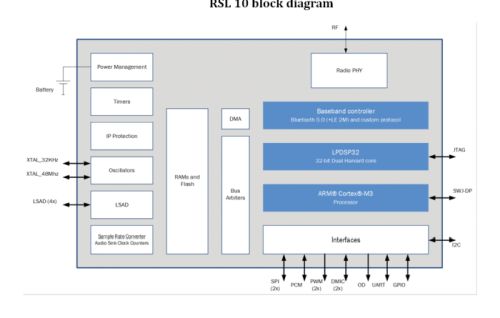
To understand mHealth applications, it is useful to examine the SoCs targeting this area. One of the latest is ON Semiconductor’s RSL10 radio SoC. It offers the industry’s lowest power consumption while the device is in deep sleep and at peak receiving. The SoC incorporates a sophisticated power management system that allows operation from any voltage between 1.1 – 3.3 V, so it can work from standard coin-cell batteries.
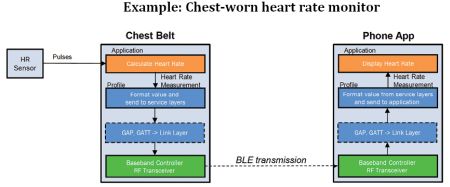
In typical IoT mHealth applications, the device is only required to transmit for a few milliseconds with an in-built standby mode used to reduce the average current consumption to a typical value of 30 μA. When it is not transmitting, the RSL10 will go into one of several deep sleep modes that can reduce the current consumption to levels as low as 25 nA.
Low power consumption has led the RSL10 to find use in implantable electronics. In one case, it replaced a MedRadio (Medical Device Radiocommunications Service) band device in implantable medical equipment. RSL10 was recently validated by the Embedded Microprocessor Benchmark Consortium’s ULPMark as the industry’s most efficient processing core, where it produced Core Profile scores more than twice as high as the previous
industry leader.
In another case, and RSL10 SoC worked just from energy harvested when a person pushed a wall switch. The wall switch controlled house lighting via the RSL10’s BLE radio. Using the wireless capability to replace a conventional wall switch eliminated the need to run ac wiring to the wall switch.
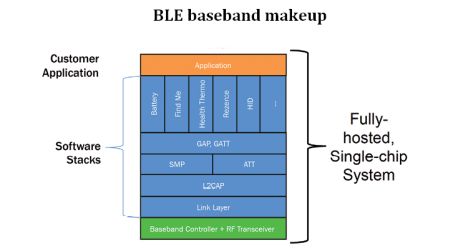
One strategy SoC makers employ is to use processors that have a wide following so that designers are already familiar with the computing architecture. For example, the RSL10 integrates a 48-MHz 32-bit Arm Cortex-M3 processor. Along with the Arm processor is a 32-bit digital signal processor (DSP) in a tiny 5.5-mm2 footprint. The associated baseband hardware is Bluetooth 5 certified. It supports RF links at speeds up to 2 Mbps – around twice the data throughput of earlier devices.
Alongside the Arm Cortex-M3 core, the highly integrated RSL10 includes 76 kB of SRAM program memory, 88 kB of SRAM data memory, and 384 kB of flash memory for the Bluetooth Low Energy stack and applications. The flexible architecture allows the Arm Cortex-M3 processor to execute from SRAM and/or flash memory.
Obviously, mHealth implementations demand built-in IP protection so the contents of the flash memory cannot be copied or accessed externally after the chip has booted. The RSL10 also supports Firmware Over-The-Air (FOTA) programming, so the SoC can update its stacks and applications to take advantage of new technology as it’s released.
ON Semiconductor provides a development environment for the SoC including software, hardware, and a wide range of Bluetooth profiles for mHealth. To use Bluetooth technology, a device must be compatible with the subset of Bluetooth profiles. A Bluetooth profile is a specification regarding an aspect of Bluetooth-based wireless communication between devices. It resides on top of the Bluetooth core specification and (optionally) additional protocols. The way a device uses Bluetooth technology depends on its profile capabilities. The profiles provide standards which manufacturers follow to allow devices to use Bluetooth in the intended manner.
There are several mHealth Bluetooth profiles that RSL10 SoCs implement. They include profiles for heart rate, blood pressure, a health thermometer, glucose monitor, running speed, cycling speed, cycling power, and several others.
These profiles fall under the general category of health device profiles (HDP). They are designed to facilitate transmission and reception of medical device data. The APIs of this layer interact with the lower level Multi-Channel Adaptation Protocol (MCAP layer), but also run a service discovery protocol to connect to remote HDP devices. HDP profiles also makes use of another profile called the Device ID Profile which enables identification of a device manufacturer, product ID, product version, and so forth.
References
ON Semicondcuotr RSL 10 data sheet

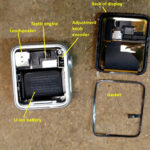
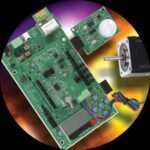
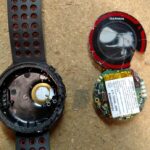
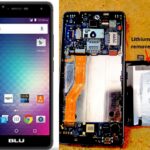
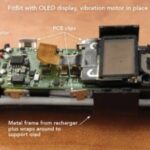
Leave a Reply